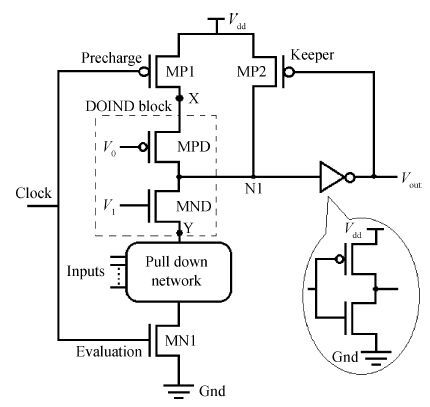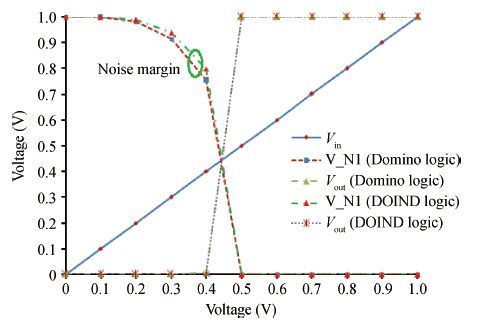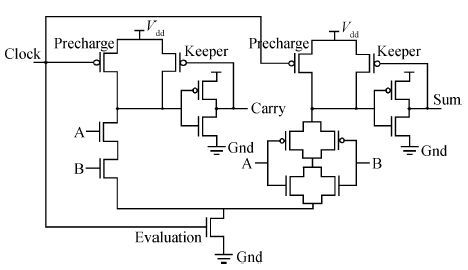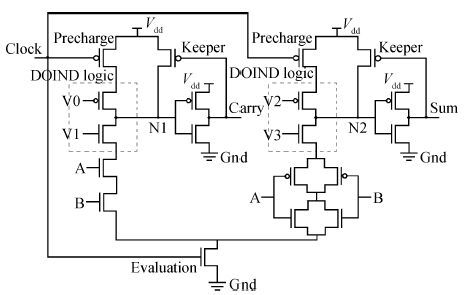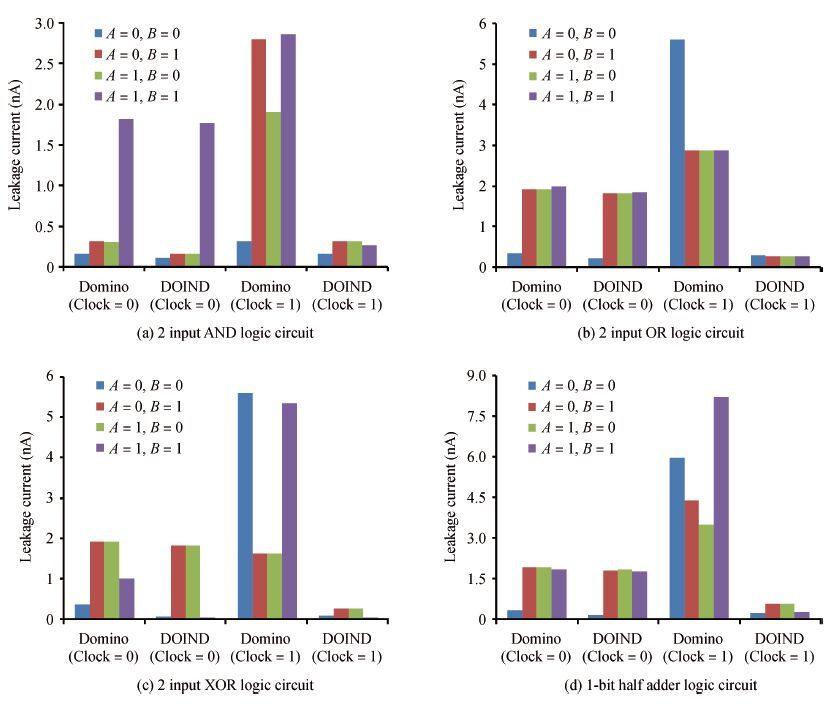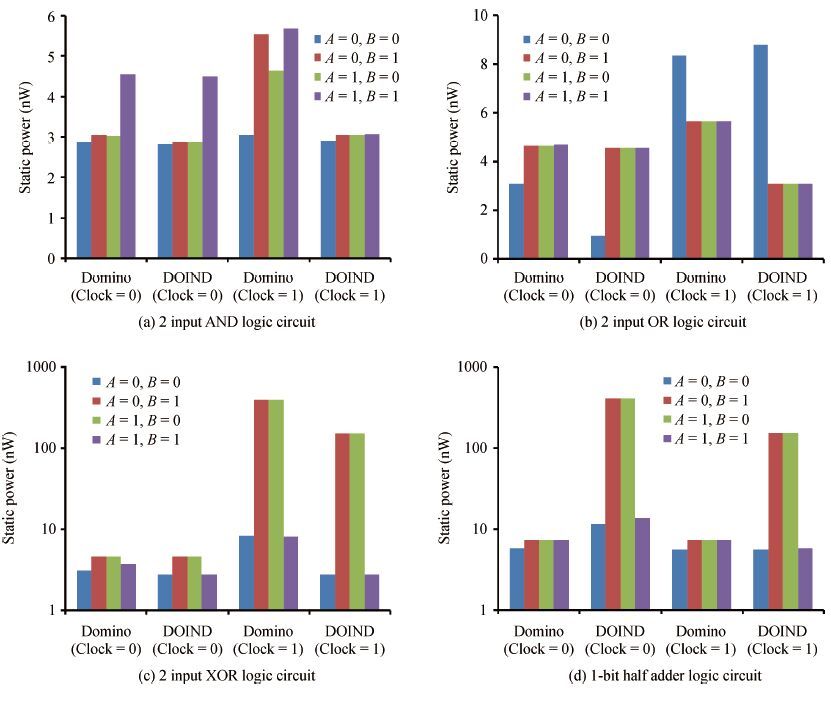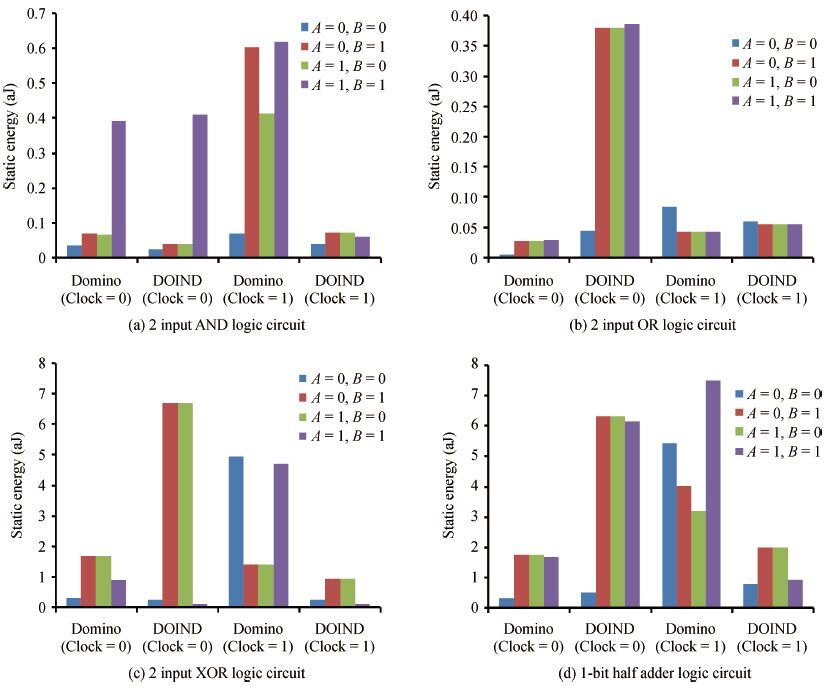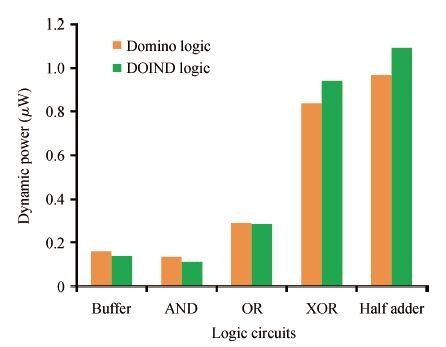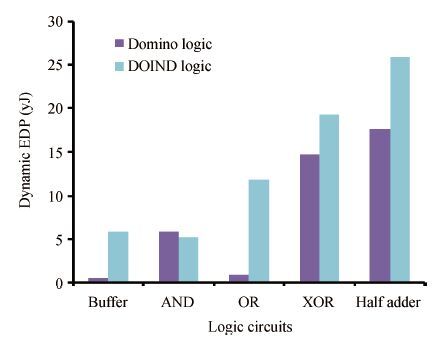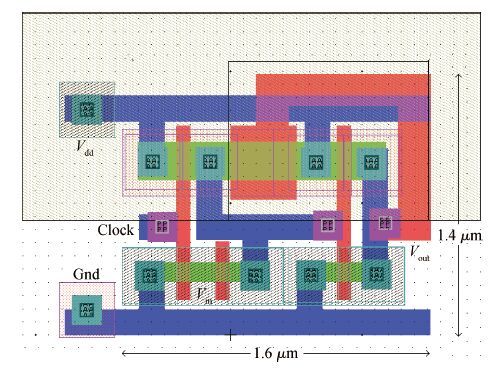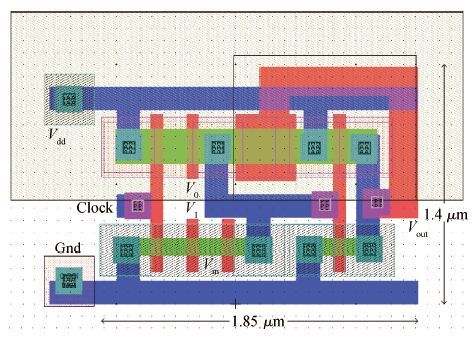| Citation: |
Ambika Prasad Shah, Vaibhav Neema, Shreeniwas Daulatabad. DOIND: a technique for leakage reduction in nanoscale domino logic circuits[J]. Journal of Semiconductors, 2016, 37(5): 055001. doi: 10.1088/1674-4926/37/5/055001
****
A P Shah, V Neema, S Daulatabad. DOIND: a technique for leakage reduction in nanoscale domino logic circuits[J]. J. Semicond., 2016, 37(5): 055001. doi: 10.1088/1674-4926/37/5/055001.
|
DOIND: a technique for leakage reduction in nanoscale domino logic circuits
DOI: 10.1088/1674-4926/37/5/055001
More Information
-
Abstract
A novel DOIND logic approach is proposed for domino logic, which reduces the leakage current with a minimum delay penalty. Simulation is performed at 70 nm technology node with supply voltage 1V for domino logic and DOIND logic based AND, OR, XOR and Half Adder circuits using the tanner EDA tool. Simulation results show that the proposed DOIND approach decreases the average leakage current by 68.83%, 66.6%, 77.86% and 74.34% for 2 input AND, OR, XOR and Half Adder respectively. The proposed approach also has 47.76% improvement in PDAP for the buffer circuit as compared to domino logic.-
Keywords:
- deep submicron,
- DOIND logic,
- domino logic,
- evaluation,
- precharge,
- subthreshold leakage
-
References
[1] [2] [3] [4] [5] [6] [7] [8] [9] [10] [11] [12] [13] [14] [15] [16] [17] [18] -
Proportional views





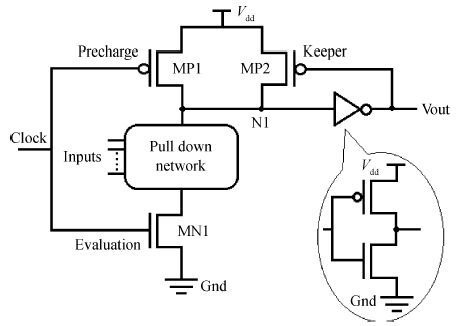
 DownLoad:
DownLoad:
